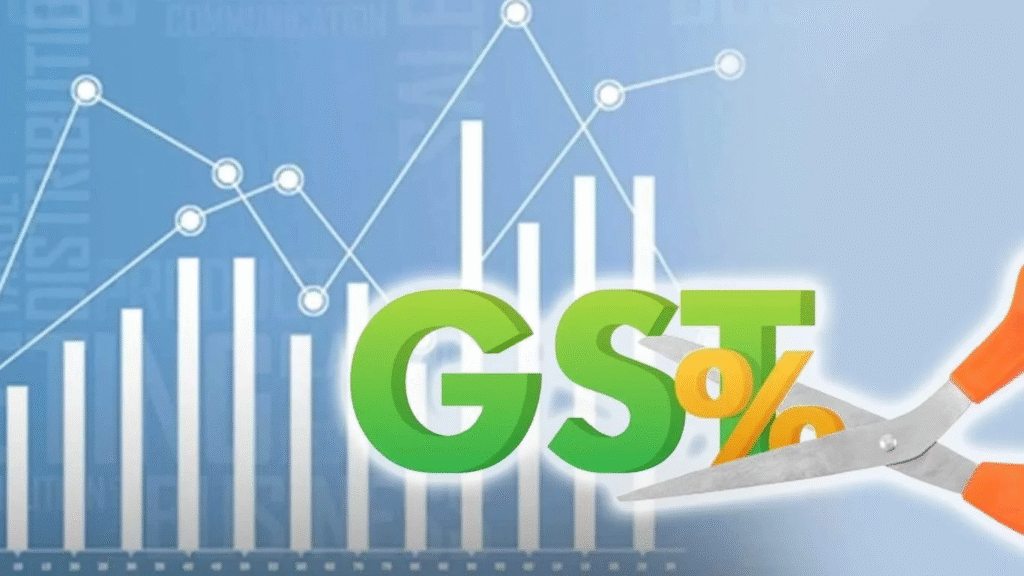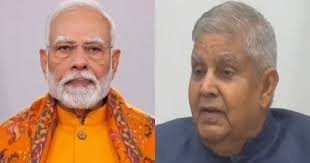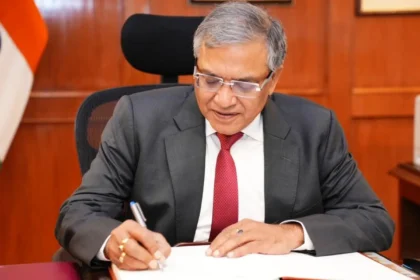2-Slab GST Structure To Transform Indian Economy; 99% of 12% Items Drop to 5%
Explore the outcome of the latest GST Council meeting. The Centre’s proposal for a two-slab structure (5% and 18%) is set to make daily essentials and electronics cheaper, while a new 40% ‘sin tax’ will be levied on luxury goods. Discover the full impact of these tax reforms on consumers and businesses
The 56th Goods and Services Tax (GST) Council convened on Wednesday, chaired by Finance Minister Nirmala Sitharaman, to discuss a major tax overhaul that could lower prices for daily essentials and electronics while raising levies on select luxury items.

The Centre’s proposal, described as a ‘next-gen’ GST reform, aims to prune the current four-tier tax structure into just two slabs—5% and 18%. This would mean doing away with the 12% and 28% brackets introduced when GST was launched in July 2017.
Under the plan, nearly all goods in the 12% slab and most items currently taxed at 28% will shift to lower rates, resulting in a potential price drop for several consumer products.
According to the blueprint, over 99% of goods now taxed at 12%—including staples like ghee, nuts, packaged drinking water (20-litre cans), non-aerated beverages, namkeen, medicines, and medical devices—are expected to move to the 5% category.
Common household items such as pencils, bicycles, umbrellas, and hairpins could also see taxes reduced to 5%.
Electronic appliances may also become more affordable. Products like certain televisions, washing machines, and refrigerators, currently taxed at 28%, would fall under the proposed 18% bracket.
While most goods are poised for a tax cut, the government plans to introduce a special 40% slab for luxury and ‘sin’ goods. High-end automobiles, SUVs, and other premium vehicles, which now attract a 28% GST plus a compensation cess, are likely to move into this new category.
Tobacco products, pan masala, and cigarettes are also expected to fall under this bracket, with an additional levy being considered for this segment.
Electric vehicles (EVs) have also come under the spotlight. The Centre is pushing for a 5% GST on EVs to promote adoption, even as discussions continue on whether premium EVs should face higher taxes to signal differentiation between affordable and luxury offerings.

Opposition-ruled states, including West Bengal, Kerala, Tamil Nadu, Punjab, Telangana, Karnataka, Himachal Pradesh, and Jharkhand, have raised concerns about the revenue implications of these sweeping cuts.
They argue that the move could significantly dent state revenues and have demanded a clear compensation mechanism. These states are expected to hold a strategy meeting ahead of the Council session.
When GST was rolled out in 2017, the Centre had agreed to compensate states for revenue loss for five years, funded through a compensation cess ranging from 1% to 290% on luxury and demerit goods.
That mechanism expired in June 2022, and states now want any additional levy on top of the 40% slab to be earmarked for their revenue pool.
The overhaul follows Prime Minister Narendra Modi’s Independence Day address, where he promised major tax reforms to boost consumption and simplify the GST regime.
The Group of Ministers (GoM) that reviewed the Centre’s proposal has already endorsed the plan in principle, paving the way for formal consideration by the Council on September 3 and 4.
If approved, the reform could significantly reshape India’s tax structure—cheaper essentials and electronics on one hand, and steeper rates for luxury cars and sin goods on the other—making this one of the biggest GST overhauls since its inception.
In a landmark move set to reshape India’s economic landscape, the GST Council has convened to finalize a historic overhaul of the country’s indirect tax structure. Following a proposal from the Centre, the Council is poised to consolidate the current four-tier system into a streamlined two-slab structure of 5% and 18%. This “GST 2.0” is a major step towards simplifying the tax regime, lowering prices for consumers, and reigniting consumption ahead of the crucial festive season.
The decisions from the GST Council meeting, presided over by Finance Minister Nirmala Sitharaman, are expected to directly impact the wallets of millions of Indians. The central objective is to provide significant tax relief on everyday essentials and aspirational goods, which have been burdened by higher taxes for too long.
The most significant change is the proposed abolition of the 12% and 28% tax slabs. Under the new framework, nearly 99% of items currently taxed at 12% are expected to be moved to the lower 5% bracket. Similarly, a vast majority of goods in the 28% slab—around 90% of items—will be shifted to the more affordable 18% category.

This rationalization is projected to have a ripple effect on consumer prices:
Daily Essentials Get Cheaper: Many food staples and household goods, which currently fall under the 12% slab, are set to become more affordable. This includes items like ghee, bottled water, nuts, and certain processed foods. The price reduction will provide a welcome relief for the average Indian household, putting more money in their hands and stimulating demand.
Electronics & Durables Become Accessible: Goods like air conditioners, televisions, washing machines, and refrigerators, which are currently taxed at a high 28%, are expected to see their tax rate drop to 18%. This significant cut is a major boost for the consumer durables sector, which has faced sluggish demand. Lower prices are anticipated to spur purchases, especially during the upcoming Diwali season.
Automobiles to See Mixed Impact: The automobile sector is also a key focus of the reforms. While entry-level cars and two-wheelers are likely to benefit from a lower tax rate, there are proposals to introduce a differential tax on luxury vehicles.
To compensate for the potential revenue loss from the tax cuts, the government has proposed a new, higher tax slab of 40% for “sin goods” and select luxury items. This move is a strategic one, aiming to maintain revenue neutrality while also discouraging the consumption of products deemed harmful to society or individuals.
The list of items expected to fall under this new 40% ‘sin tax’ includes:
Tobacco and related products: Cigarettes, pan masala, and gutka will continue to attract high taxes, including an additional compensation cess.
Luxury vehicles: High-end cars, particularly those with large engines, are expected to be subject to the new 40% rate, in addition to an existing cess.
Gambling and betting: Services like casinos and online gaming platforms are also proposed to be taxed at the new, higher rate.
This new tax structure is designed to be a win-win for both consumers and the government. For the common man, it means lower prices on everyday necessities. For the government, it ensures that revenue from luxury and demerit goods remains robust, even as it simplifies the overall tax framework.
While some states have expressed concern over potential short-term revenue losses, economists and industry experts believe the long-term benefits of the new tax structure will outweigh any initial challenges. Lower prices on consumer goods are expected to drive domestic demand and consumption, which will in turn lead to increased economic activity, higher tax compliance, and ultimately, greater revenue buoyancy.
The GST Council’s decisions, if implemented as proposed, will mark a pivotal moment in India’s economic journey, positioning the country for a period of sustained, consumption-led growth. The simplification of the tax system and the reduction in tax burden on the common man are not just policy changes; they are a step towards a more transparent, efficient, and equitable economic future.
Read Also : China’s Newest ICBM Missile, the DF-61, Unveiled in Massive Military Parade








